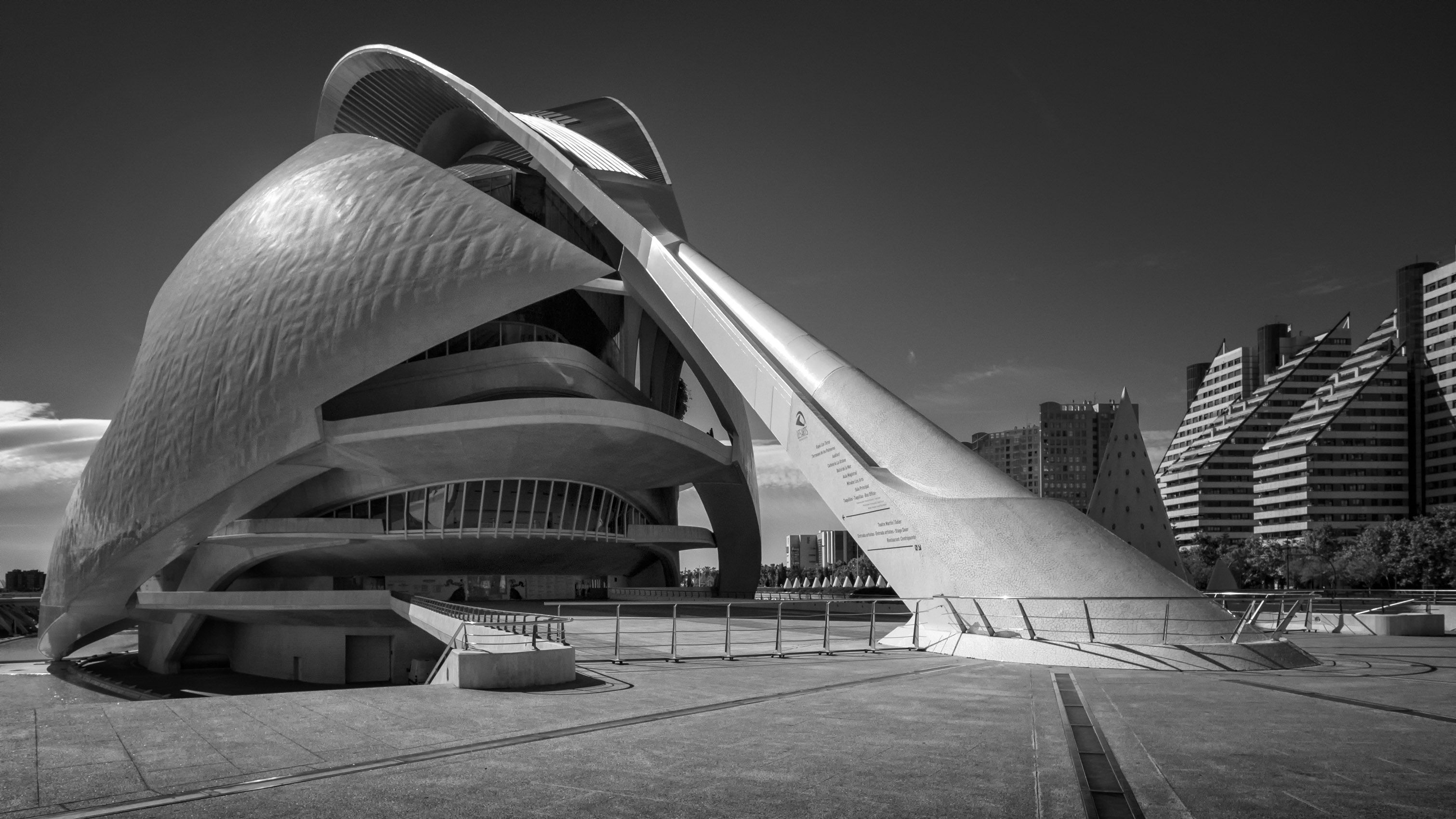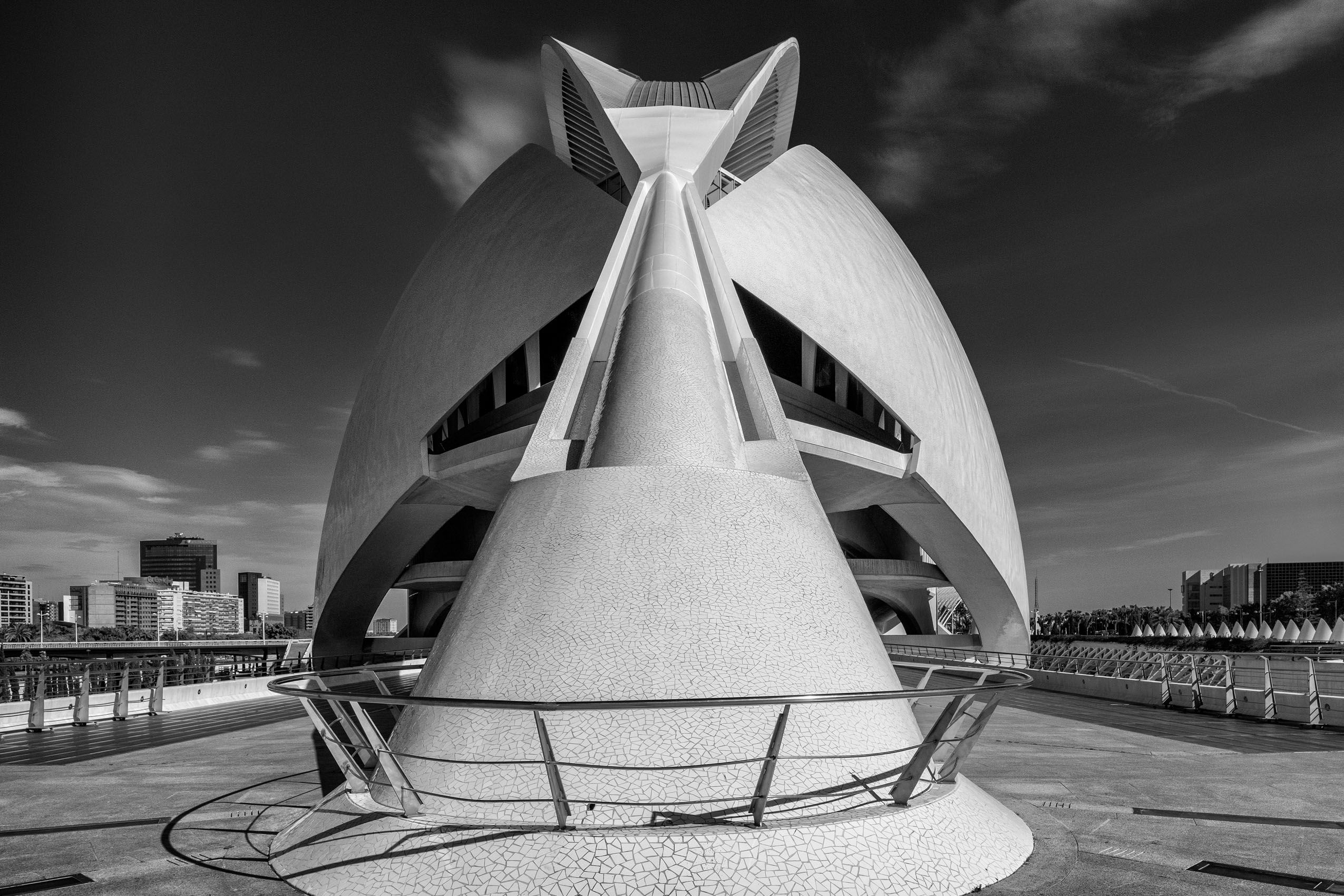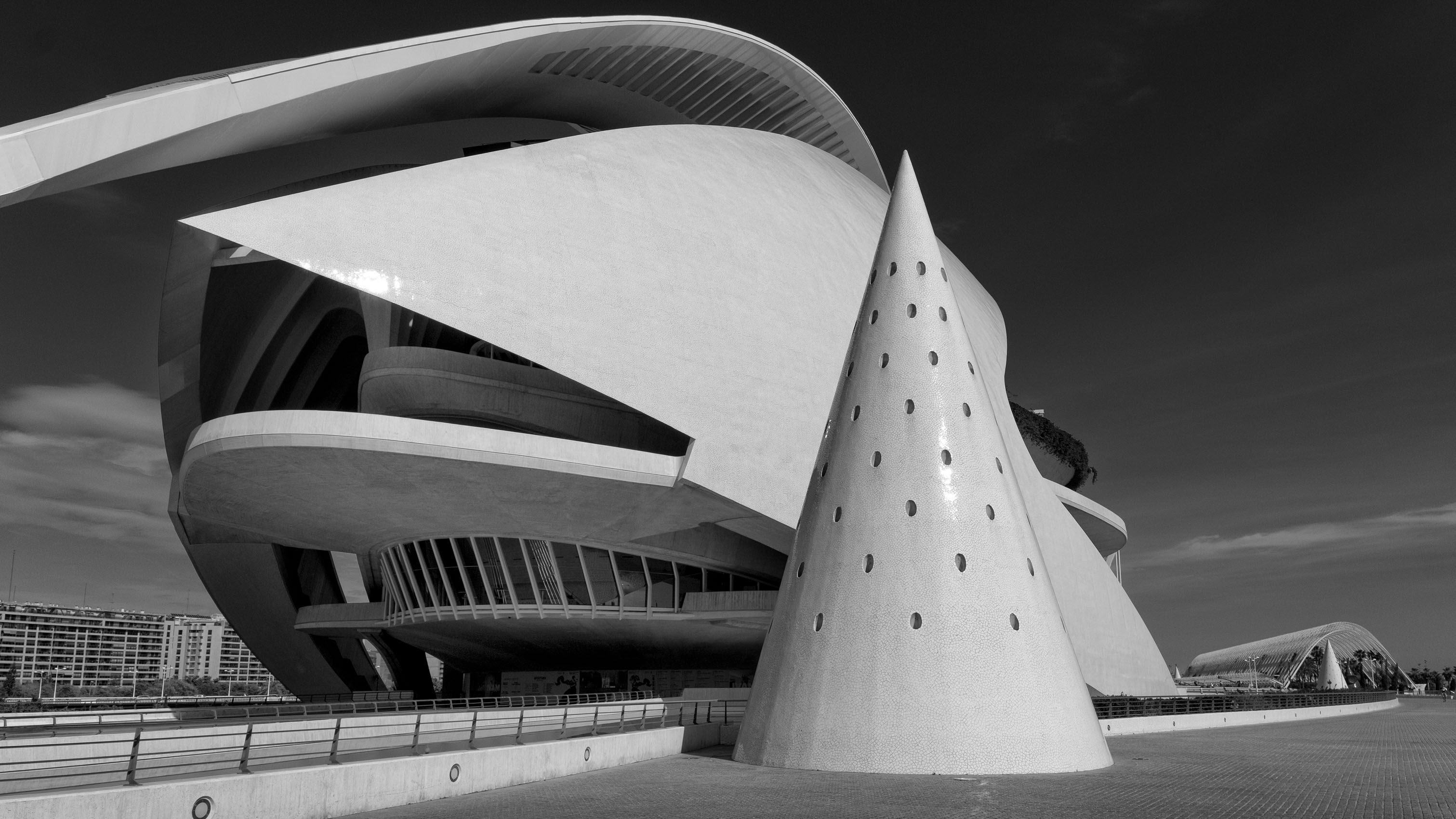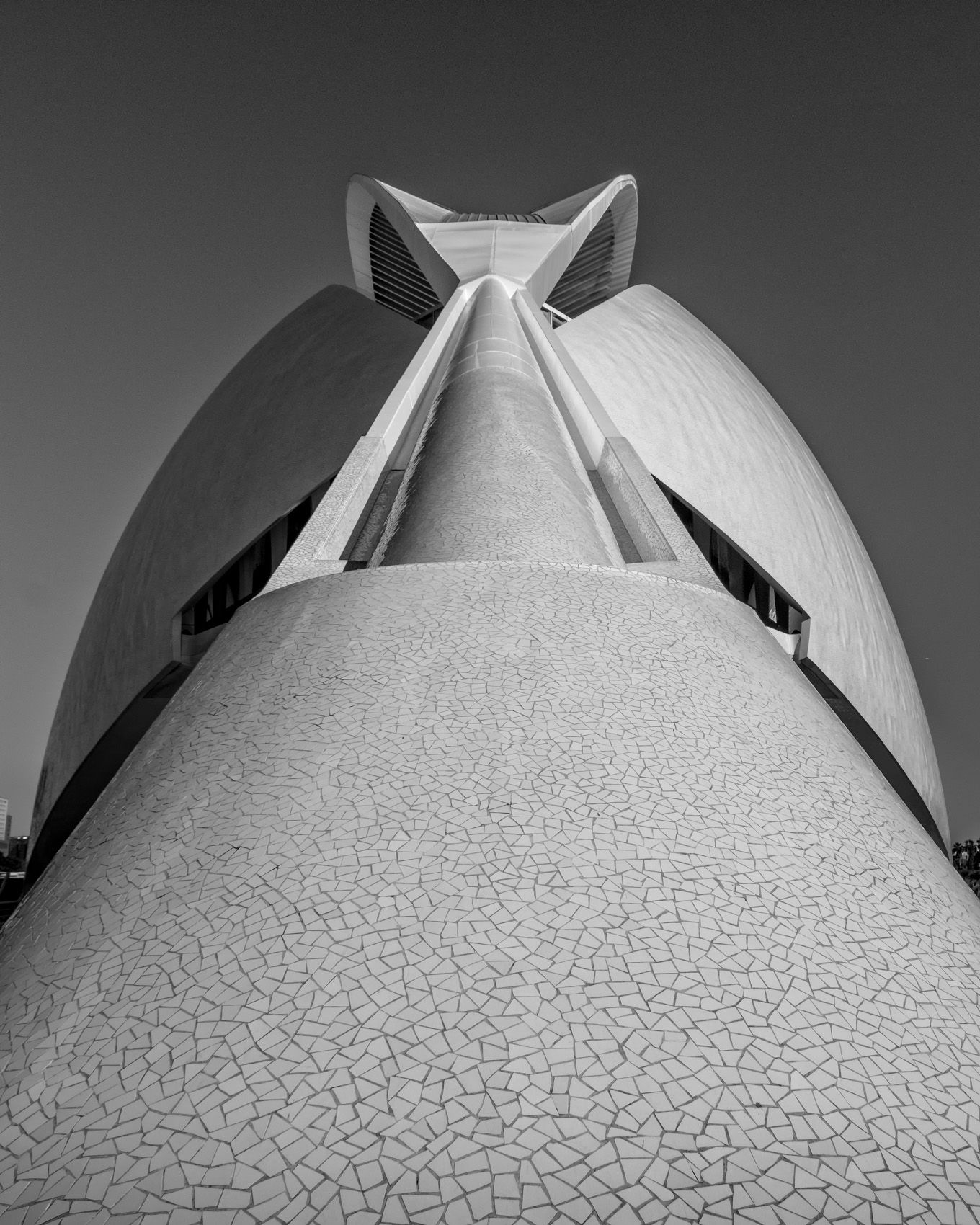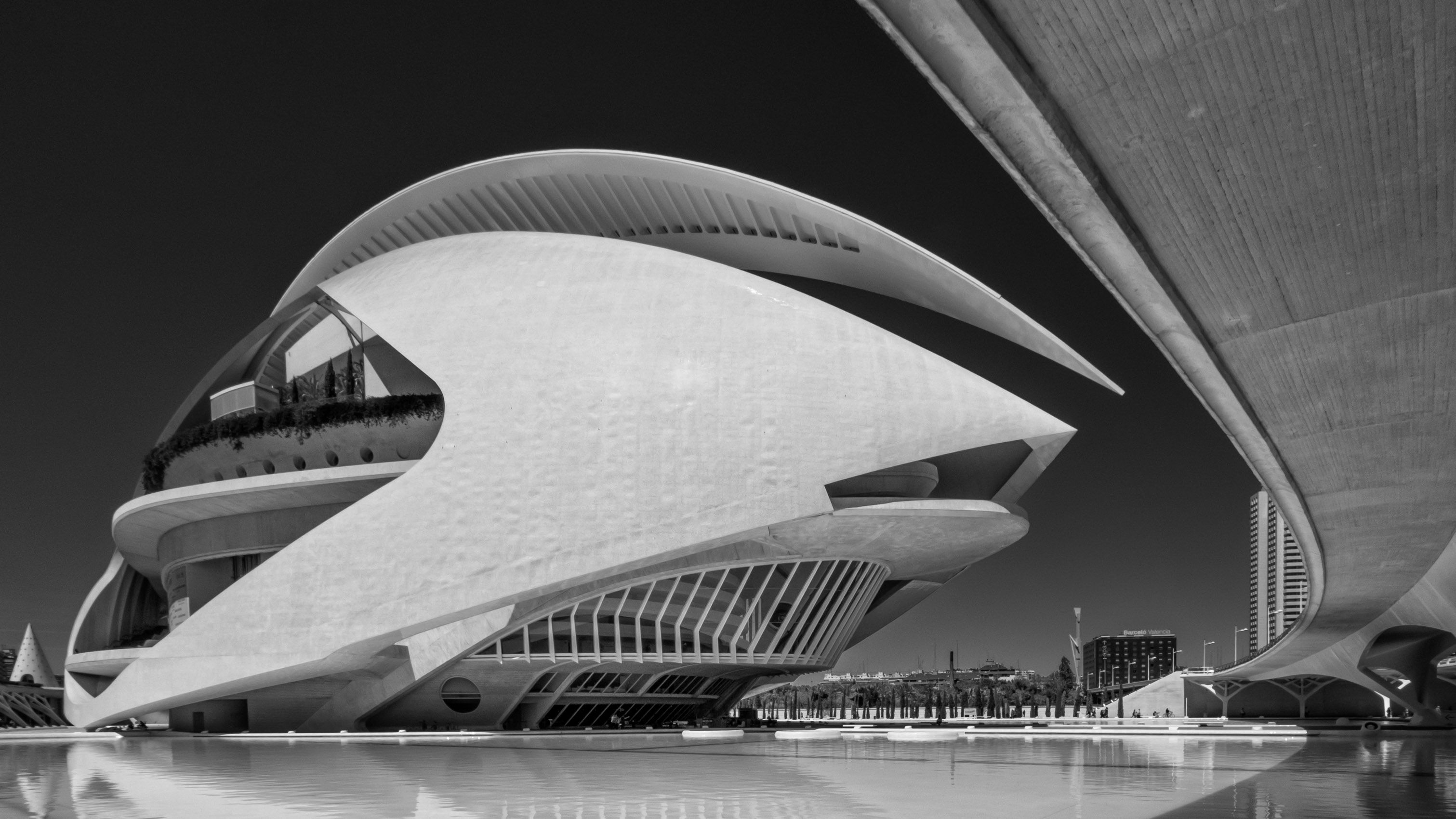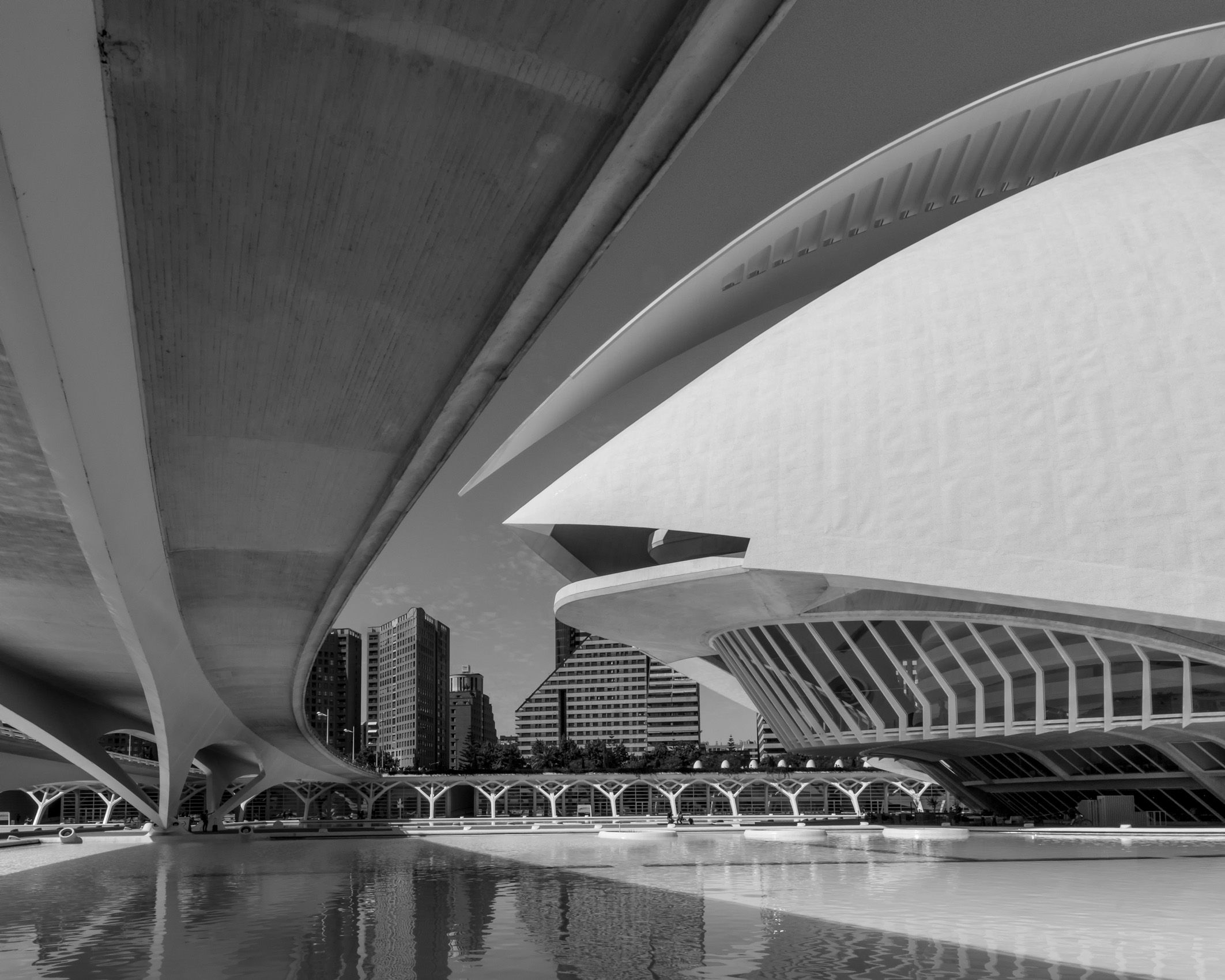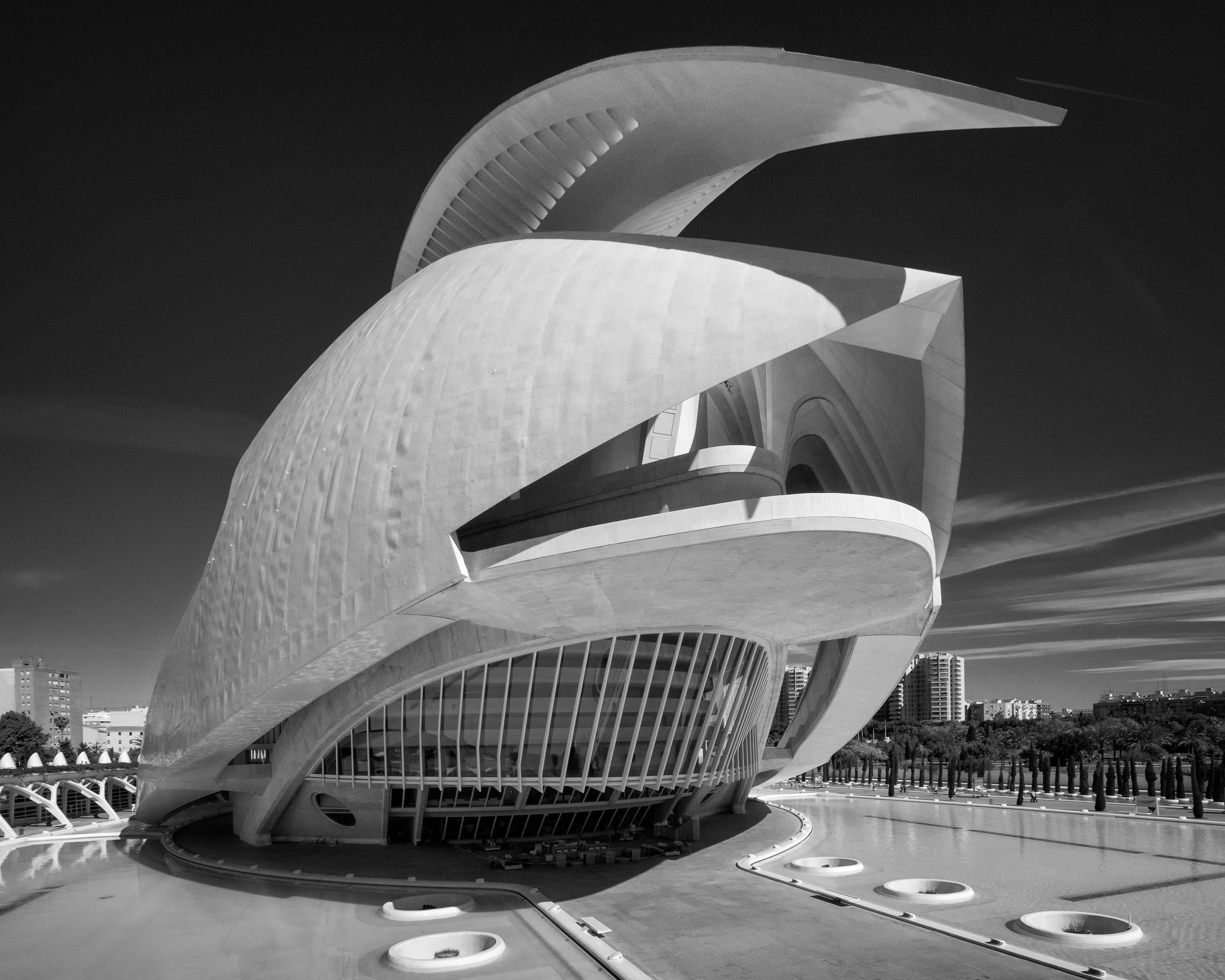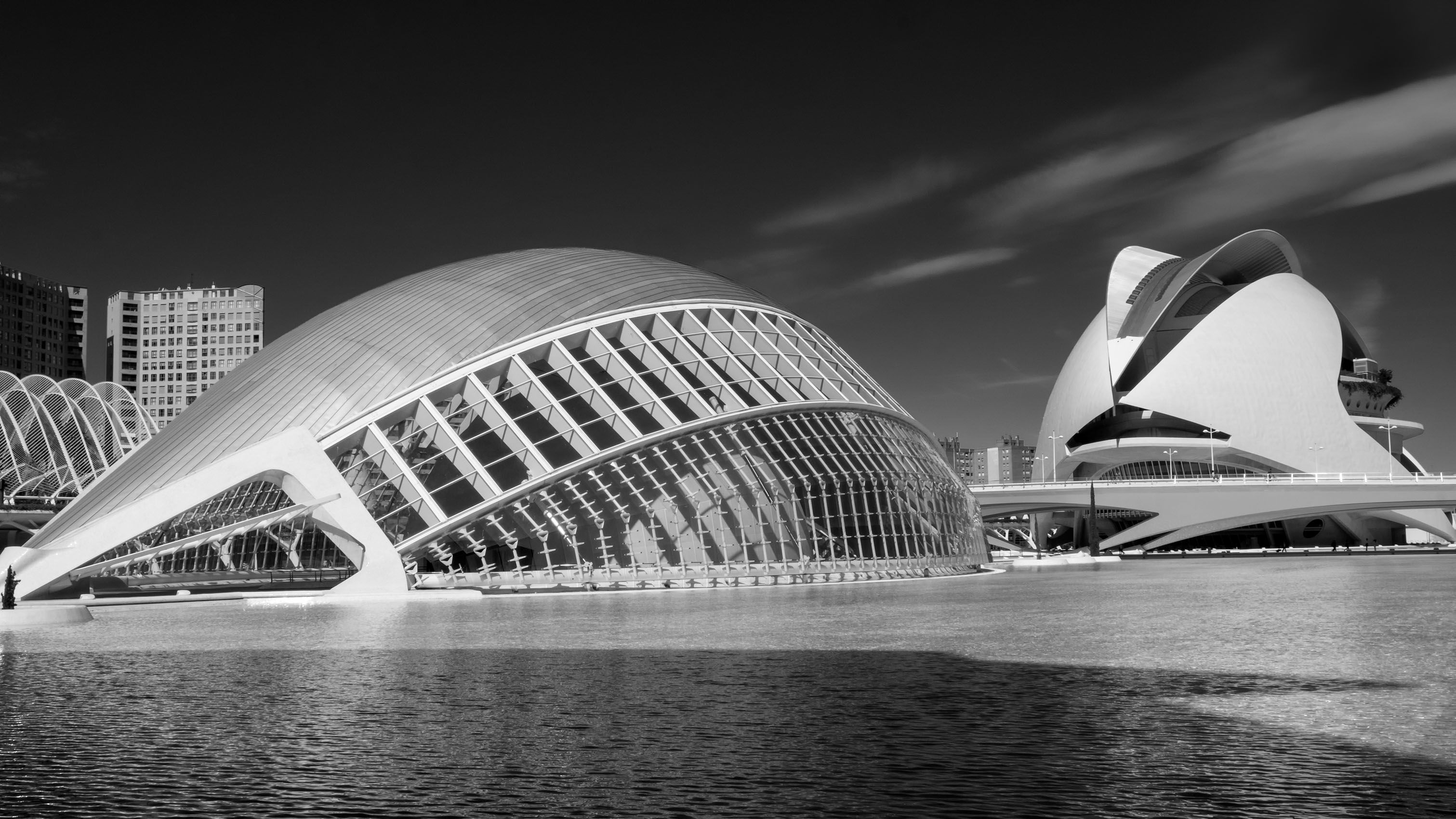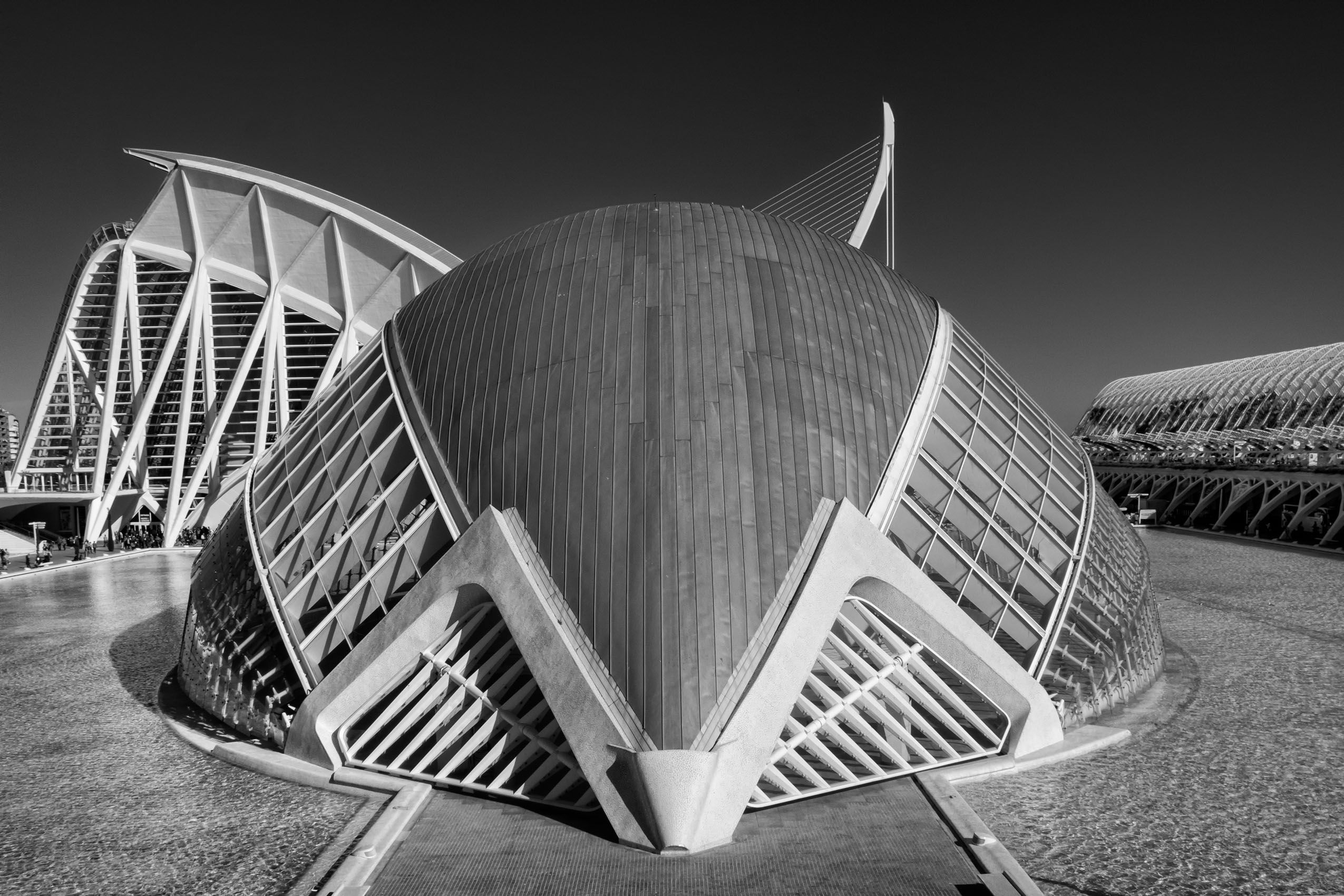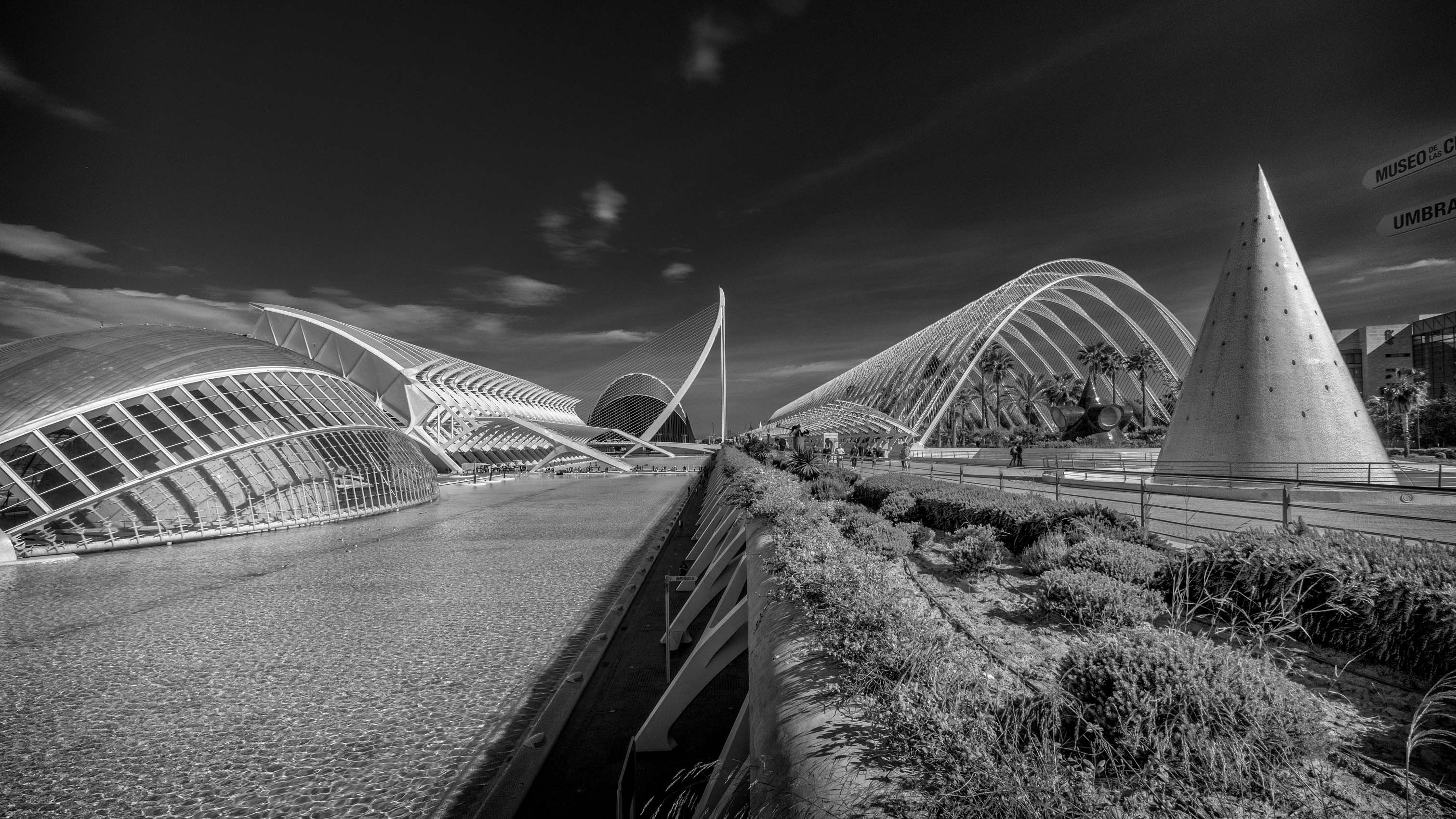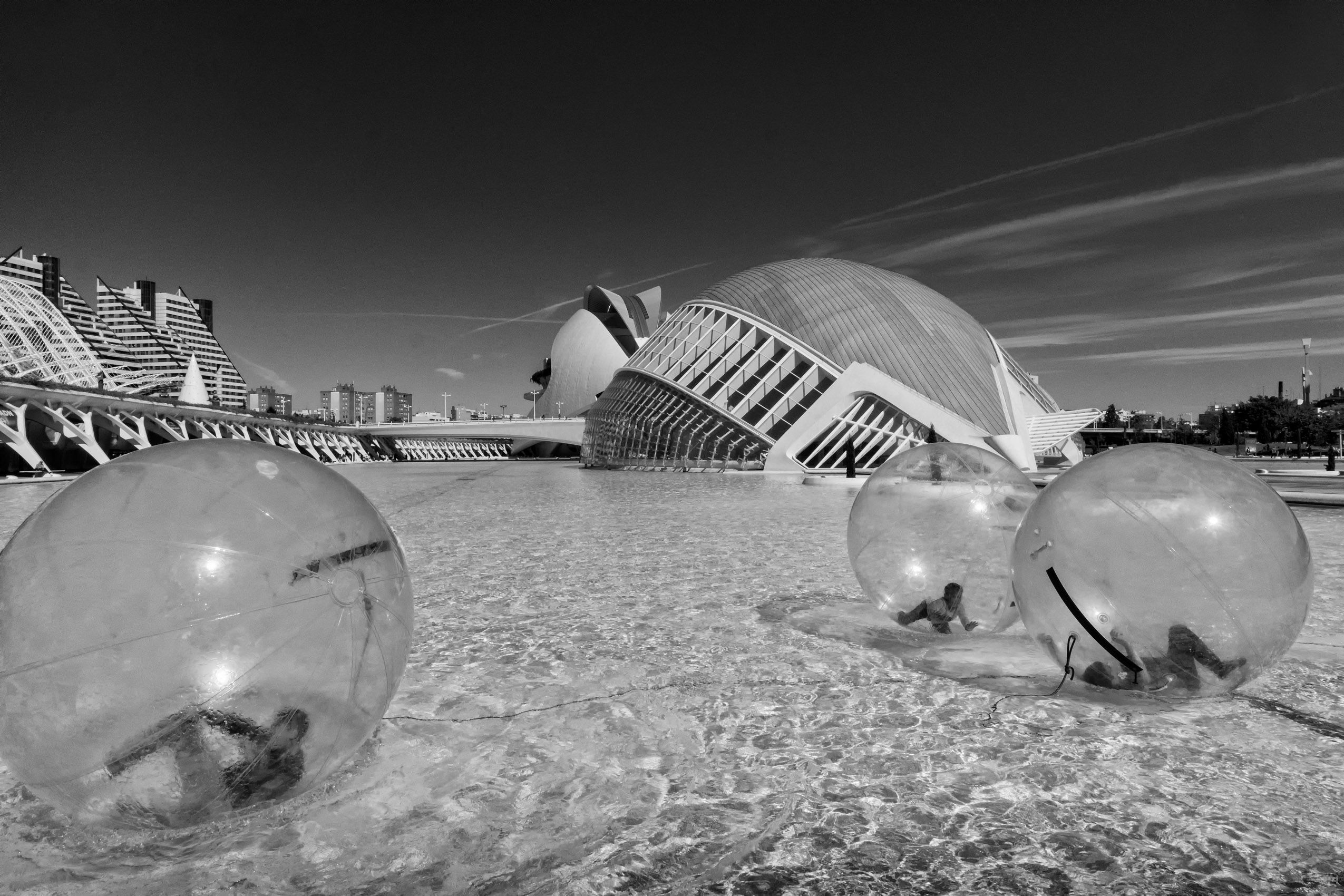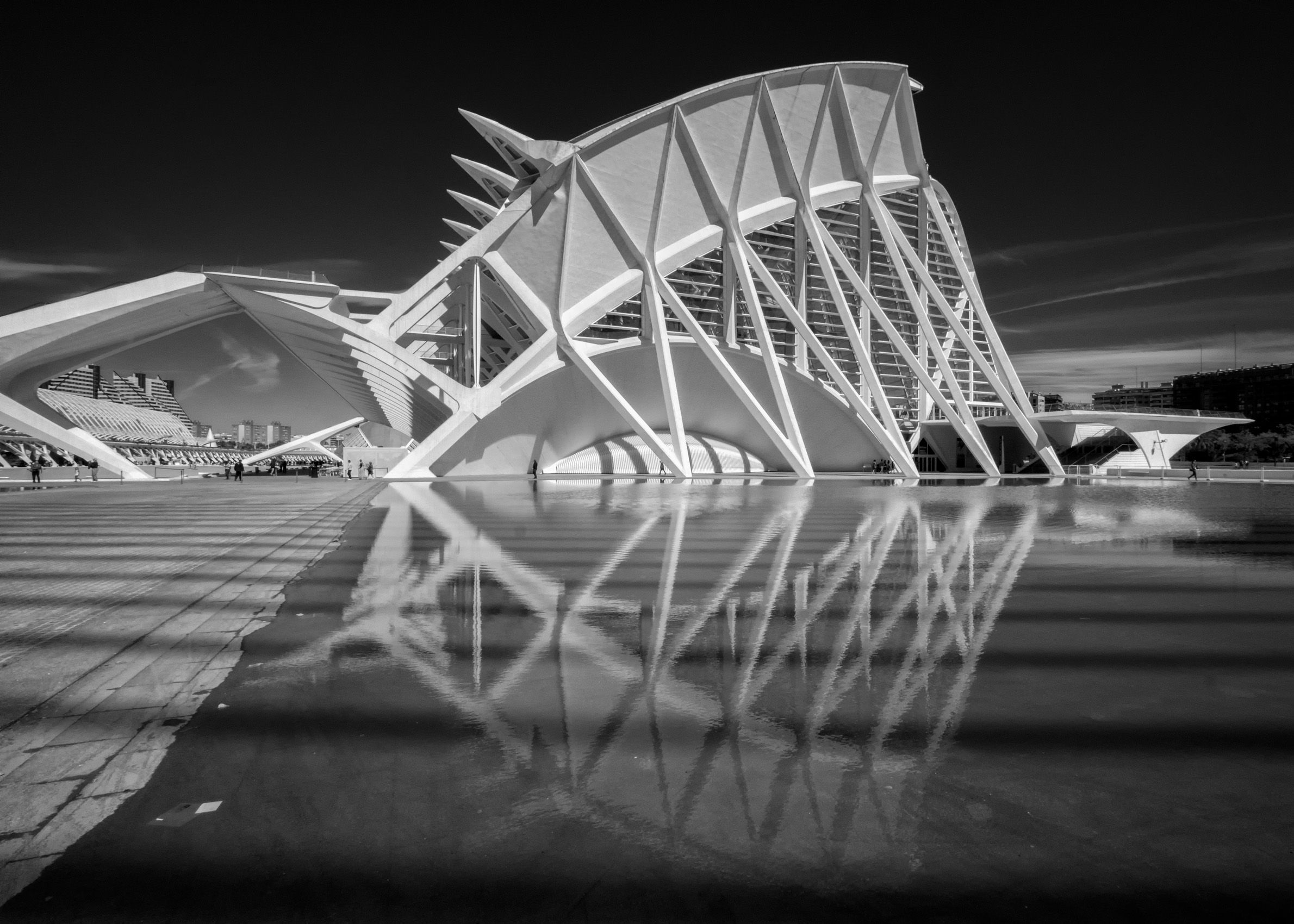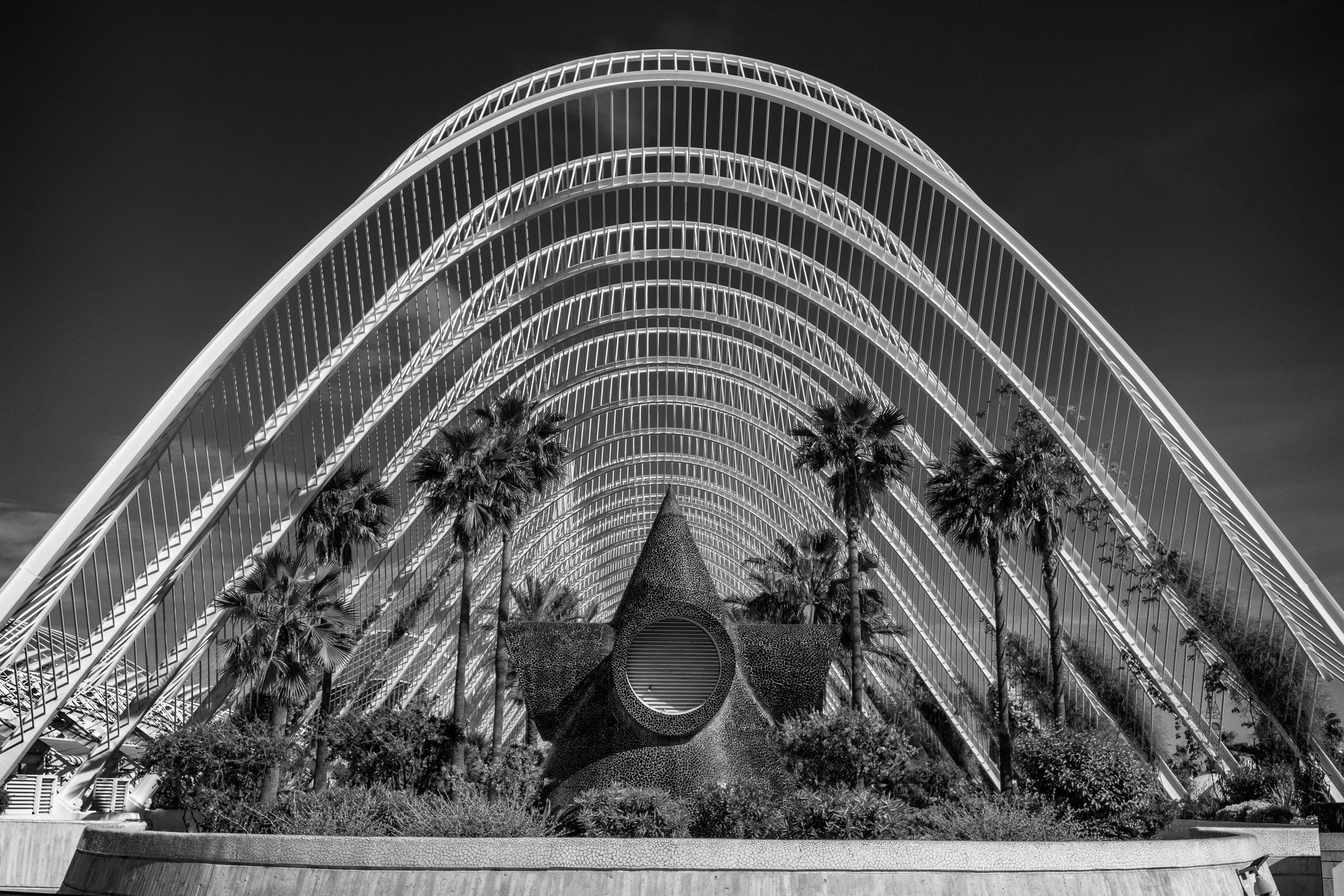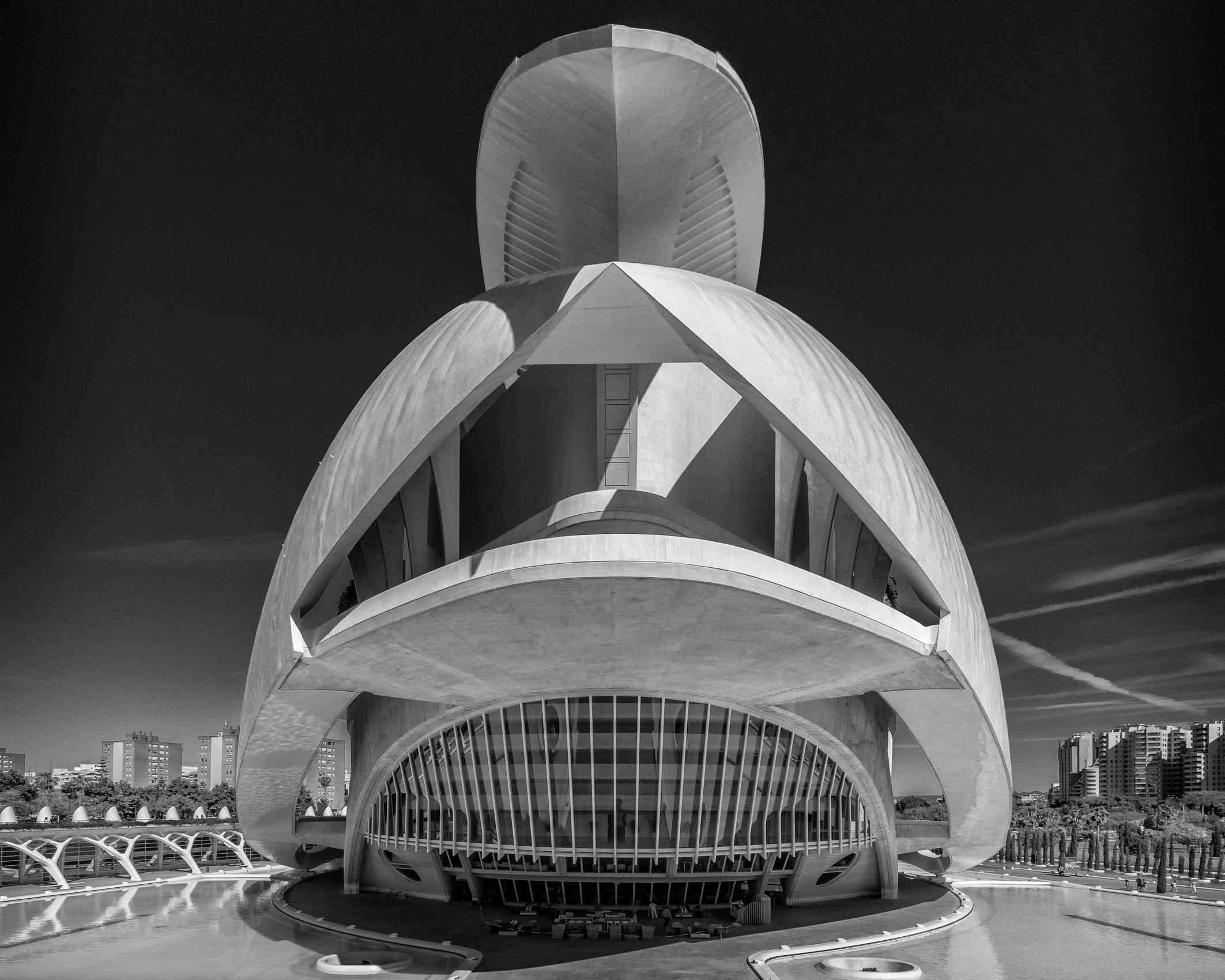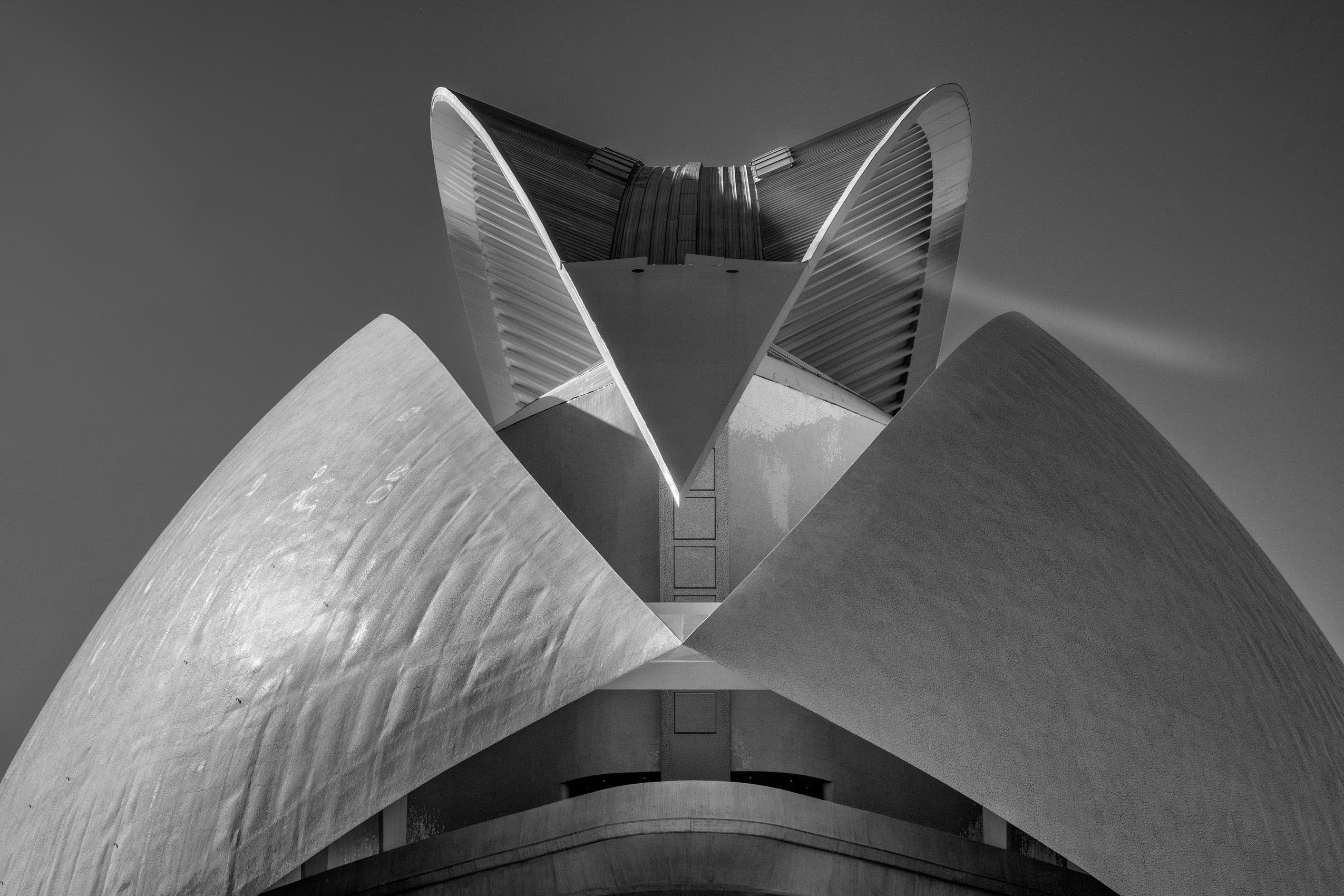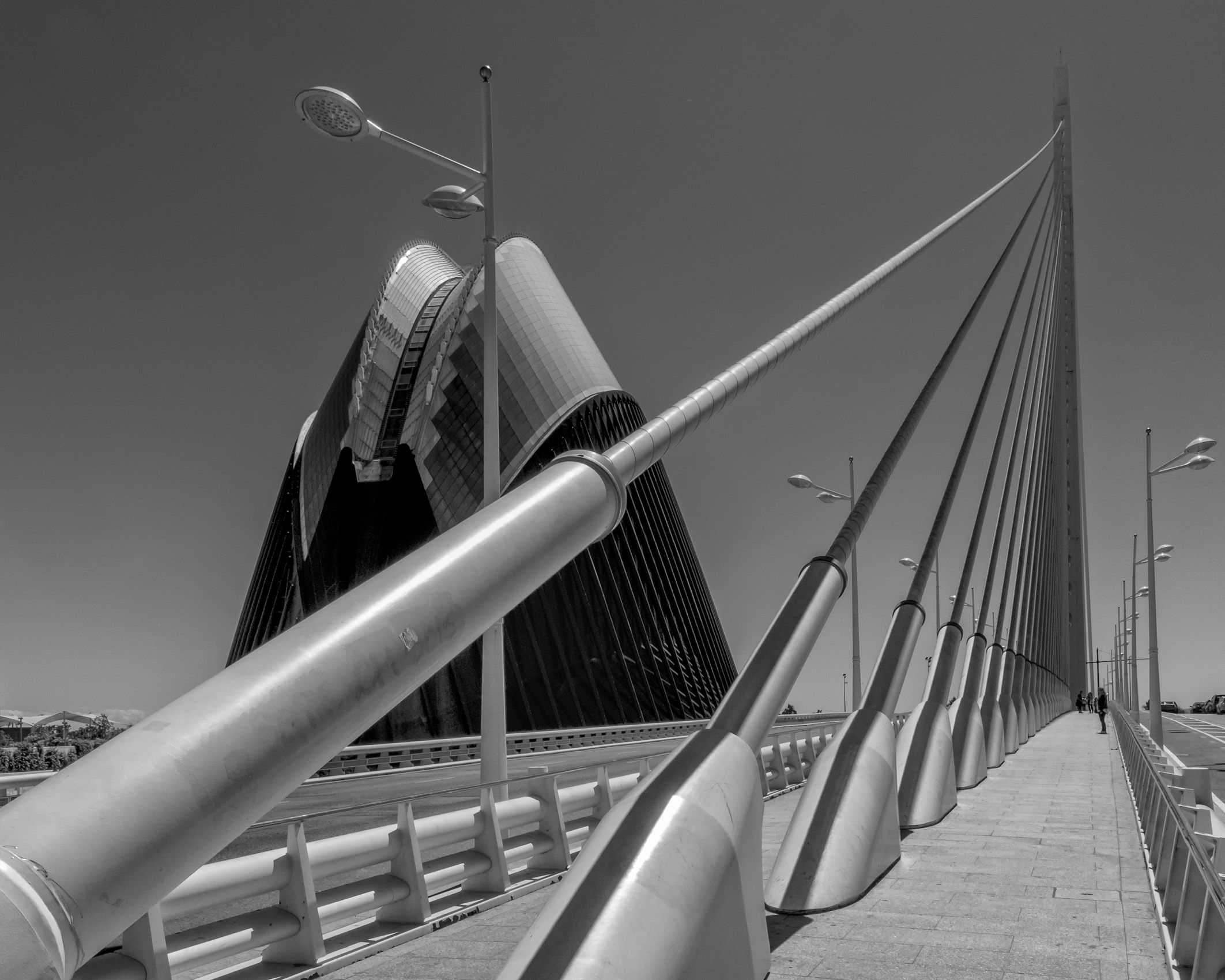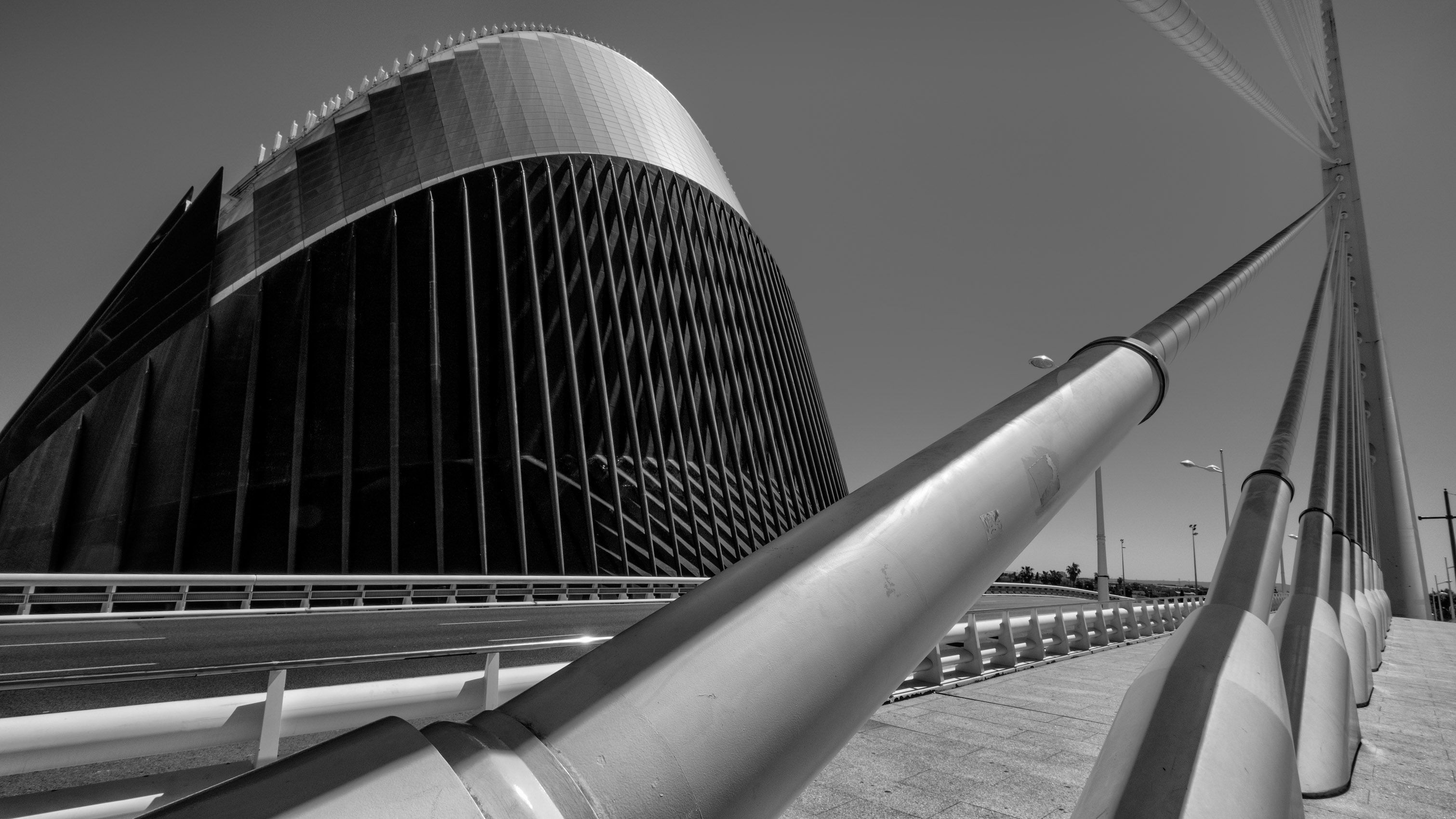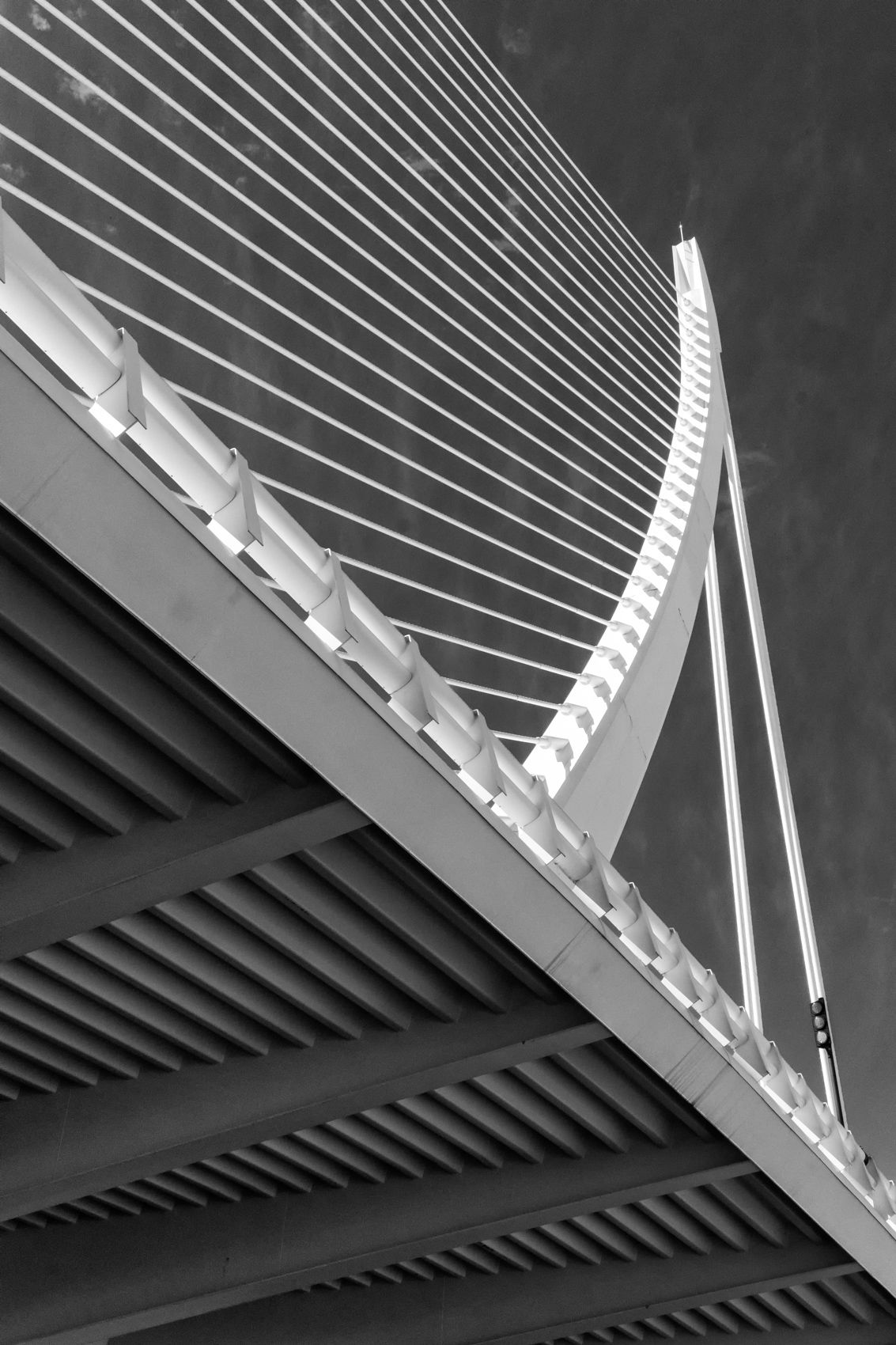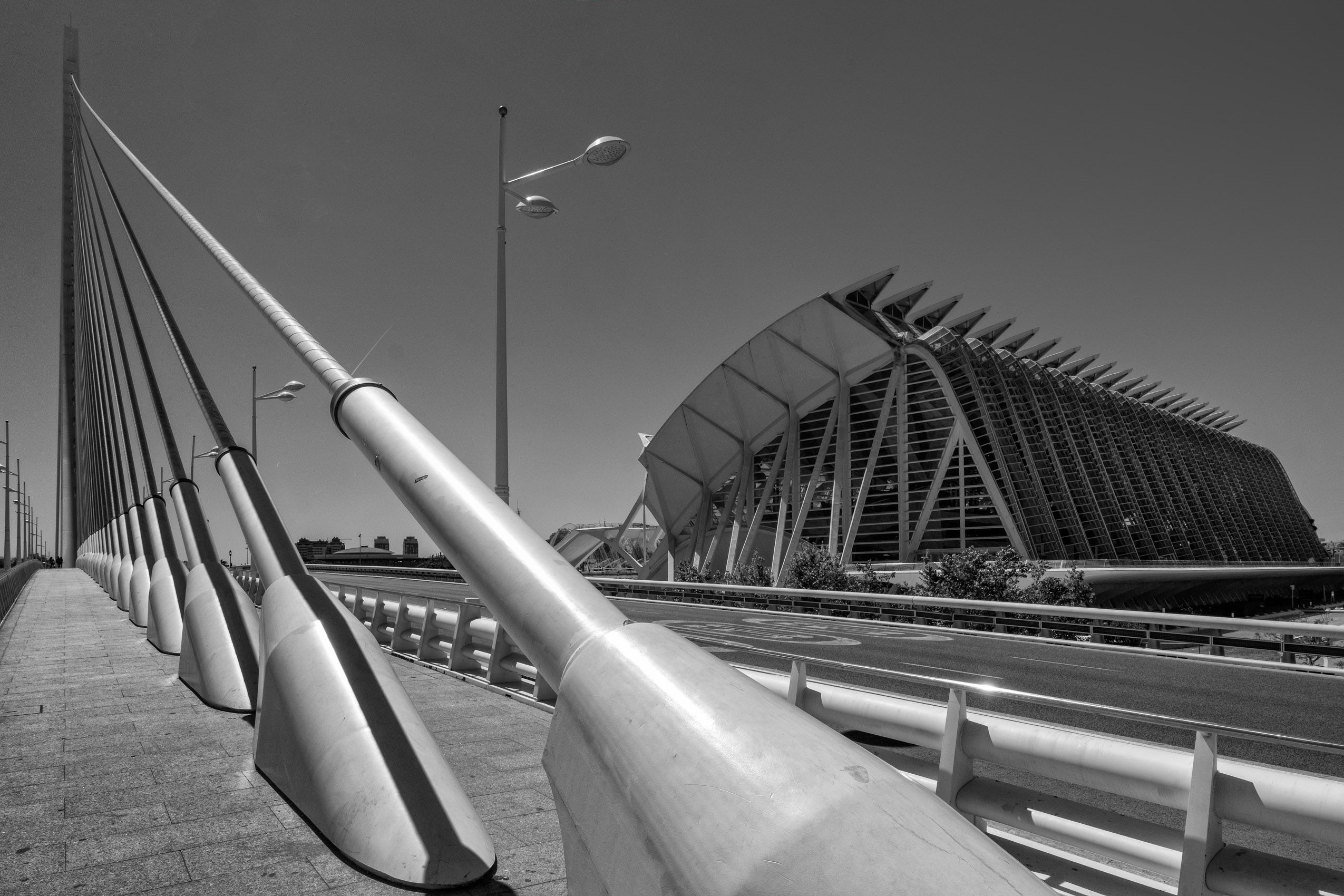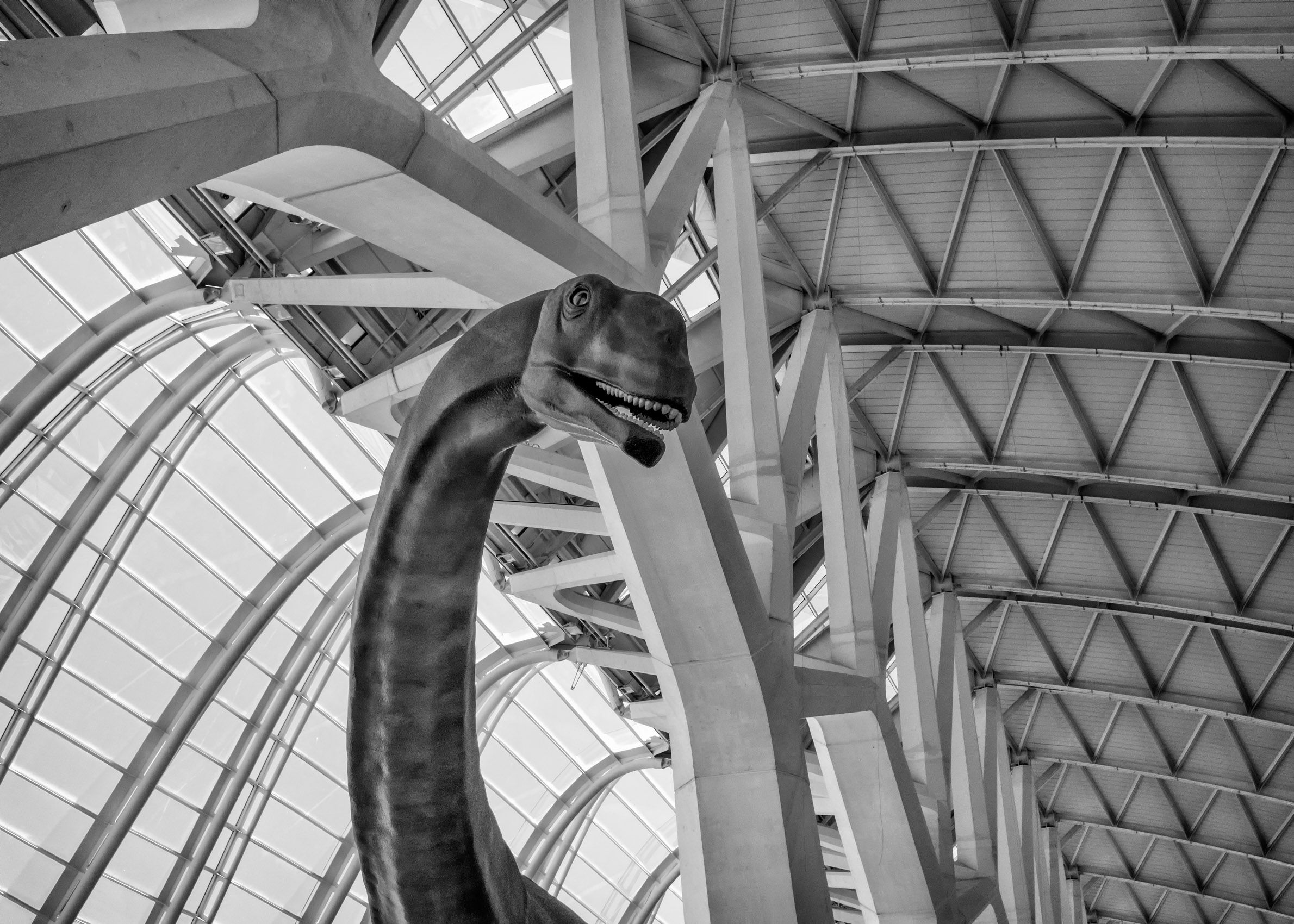SPAIN: Calatrava's Ciutat de les Arts i les Ciències in Valencia
After a disastrous flood in 1957, Valencia’s Turia river was rerouted and the dry riverbed turned into a sunken park. Four decades later, at one end of the riverbed park, a grand municipal architectural project was taking form as La Ciutat de les Arts i les Ciències or The City of Arts and Sciences. In addition to a vast aquarium (L’Oceanogràfic) designed by Félix Candela, the structures in the complex were the work of Valencia’s own Santiago Calatrava (born 1952) and include an interactive science museum (El Museu de las Ciènces Príncipe Felipe), an IMAX cinema and planetarium (L’Hemisfèric), an opera house and performing arts center (El Palau de les Arts Reina Sofia), a venue for concerts and sporting events (L’Àgora), a cable bridge over the dry riverbed (El Pont de l’Assut de l’Or), and an open structure encompassing a sculpture garden (L’Umbracle). Calatrava trained not only as an architect but also as an artist and sculptor and as a civil engineer. His many striking projects in Valencia and around the world—including bridges, transportation hubs, museums and other structures—characteristically fuse the arts and sciences into dynamic organic forms and dramatic spaces that have affinities with the works of the Catalan masters Dali, Miró, and Gaudí. Calatrava is also perhaps the most controversial major architect in the world today, because many of his projects have been dogged by huge cost overruns, leaks and other serious and costly design flaws, and missed completion deadlines. Nevertheless, the direct experience of Calatrava’s structures can be genuinely thrilling.

